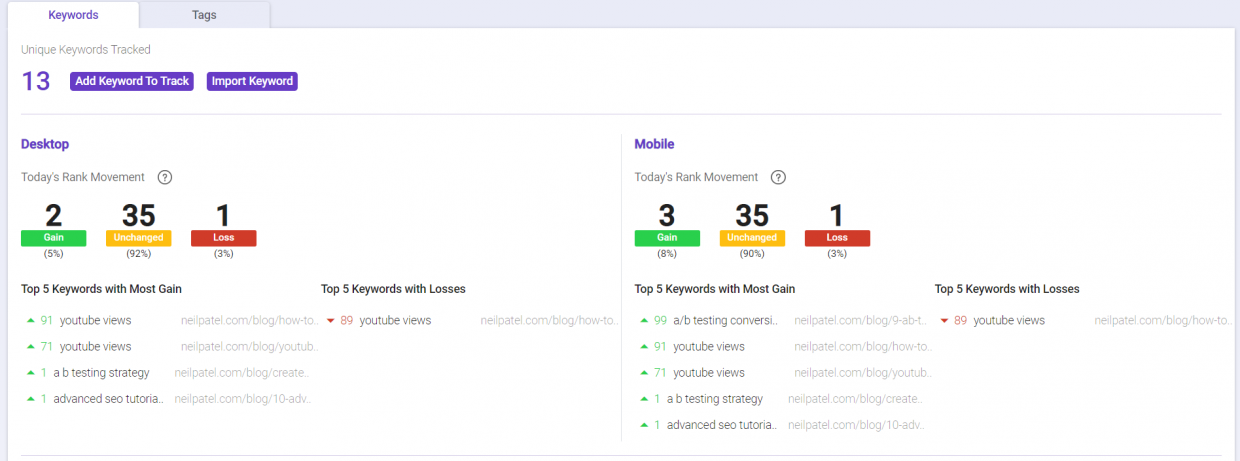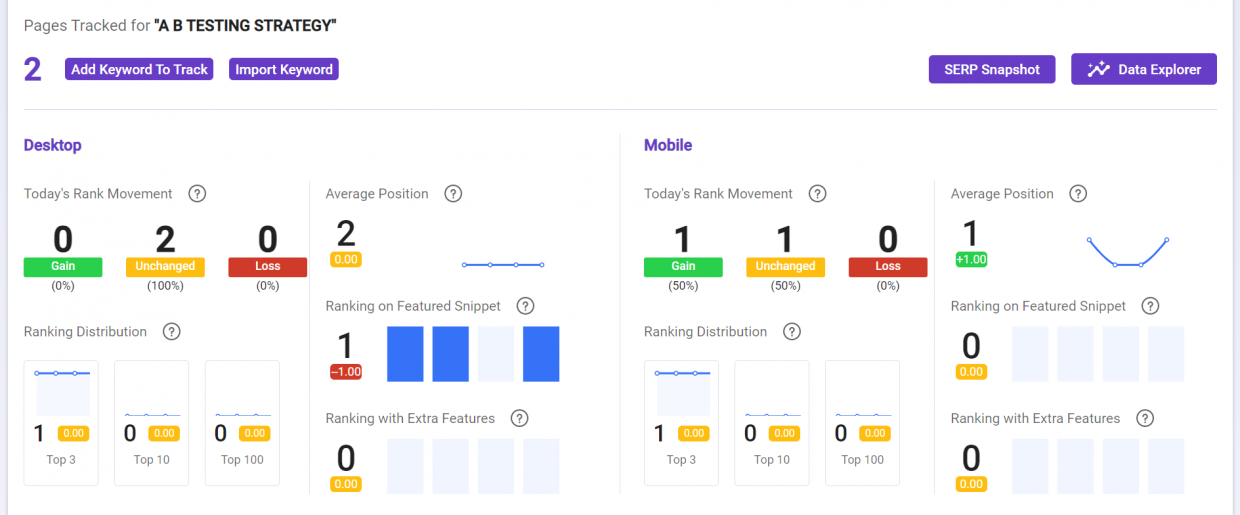Are you a small business that is planning to scale content creation? Here’s a 6-step guide that will help you manage your content at scale with a breeze.
The Smart Way to Easily Scale Content Creation Without a Large Marketing Team
Content production may seem simple. Research an outline, write and optimize your content, then publish it when you are done. Sounds easy? You may take just a couple of hours if you are quick, but that is just a single content.
No matter which industry you are working in, it will take more than just a couple of content to rise above the noise of the internet age, where there’s an astounding 2.5 quintillion bytes of data being created every day.
Your content creation process needs to scale if you are looking for results.
For small marketing teams with just two or three people, scaling your content creation may seem like a Herculean task. However, as challenging as it may sound, the good news is that you can produce exceptional content at scale efficiently by simply using this 6-step process.
This works no matter if you are trying to boost your organic traffic, create a massive library of educational posts, or simply make sure you have three months’ worth of scheduled content to stop publishing for a while and finally go on that dream trip to Italy.
So wIthout postponing it any longer, let’s dive in.
How to scale content creation?

Whether you are the head of content marketing or a solo entrepreneur managing your site content, ramping up your content is about creating a scalable content strategy.
Needless to say, this should involve both expanding the volume of production as well as maintaining high-quality and optimized writing, which is more important than ever if you are publishing online.
Here’s a quick overview of the content production framework that we use at BiQ, covering both aspects of quantity and quality:
- Revisit content strategy
- Repurpose high-performing content
- Using a content calendar
- Outsource content creation
- Perform quality check
- Track results and analyze
1. Revisit content strategy
When scaling your content creation efforts, it’s always important to revisit and recalibrate your content marketing strategy and workflow.
Creating content is not done in a single step. It is an ongoing process that involves a lot of strategizing and can be broken down into smaller tasks.
Writing a 2000-word blog post, for example, can be divided into smaller items like topic and keyword research, outlining, interlinking, graphic creation, and that is before we even get to the actual writing and edits.
Before anything, you need to better grasp your content creation process and workflow by identifying each task and time required.
Pick a day and start observing your process naturally—document all of the steps and actual time you spent to create the content objectively. You want to see how you are working now and how you can improve your flow to become more productive and efficient.
For most content marketers, the normal workflow would most likely be something like this:

Of course, every marketer will have a different content creation process. It may be very well a one-person job or a full marketing team that has a different person responsible for each different element. Either way, the key idea here is to delegate the task to the expert.
Let’s say you are really awesome at writing content but might not have a penchant for designing images. In that case, maybe you should add a designer to your marketing team.
Or perhaps you are a perfectionist and just can’t help going through and editing your content again and again. This scenario then would best call for a separate editor.
Remember, the idea of delegation here is to scale your content, so you would only need to focus on performing the tasks that you excel at.
An important time-saving tip you definitely want to implement is to stack or bundle your tasks whenever possible.
For content production, we bundle our content planning and keyword research.
Having your keywords and content planned together in advance not only gives you a better perspective on your overall content marketing strategy it also helps save the extra time we unconsciously use when switching between tasks.
Instead of logging into a keyword research tool every time you want to write something, schedule a day and concentrate solely on content ideation and targeting keywords.
For your keyword research, we recommend using our BiQ’s Keyword Intelligence. By simply typing in your keywords, you will get access to all the data and information you will need, including search volume, trends, intent, competition, and value.
These keyword data can all be viewed at a glance, making it easier to select your target keywords right away. Additionally, you can also refer to the content ideas and popular questions tab to help craft your outline, killing two birds with one stone.
Besides, as you stacked your content planning together, you should also consider how to plan your series of content pieces together so that they can strengthen your expertise in the niche.
Keep in mind that each content you create should also be addressed to your audience based on where they are in the buyer’s journey. For instance, let’s take prospects searching for information on “scale content creation” like yourself. We can create 3 angles for this:
- Awareness stage: Why do you need to scale your content creation?
- Consideration stage: How do you scale your content creation process?
- Decision stage: 5 Tools that can help you scale your content creation
To make sure you target the right people with the right content, you should also take time here to ask yourself:
- Do the topics and keywords you target fit under your niche?
- Is every content you are planning going to be helpful and relevant to your audience?
- What type of content format does your target audience most likely prefer?
Ultimately, your content strategy should provide value to your audiences.
Nevertheless, if you need a content creation guidelines, I would recommend to check them out in our previous post.
2. Repurpose high-performing content

When it comes to scaling your content, you don’t always need to reinvent the wheel.
It’s also about what content you can repurpose and republish to get the most mileage out of your existing rankings and content creation process.
Your highest performing content is successful for a reason, and most importantly, it has gained recognition with Google to be a trusted answer featured on top of SERPs.
You can use that to your advantage and get more ROI out of your best content by repurposing it into different content types to take a multi-channel marketing approach and extend your reach to more diverse audiences.
Besides, you already have the existing content, so repurposing it would be a much easier option in terms of scalability and time efficiency,
It also stands to reason that since Google already recognizes your post as the go-to answer for that keyword or topic, and the chances are that your other content formats like videos or infographics would have an edge in the ranking.
This also maximizes your website SEO as you have several pieces of content centered around the given topic, which will add more opportunities for keyword ranking and strengthen your backlinks portfolio when you interlink them.
So the more likely question is, which content should you actually repurpose?
One way you can go about this is by identifying your Top 10 content pages with the highest organic traffic on your Google Analytics. These are most likely ranking content and the ones you should repurpose for a different format.
Another more systematic approach is to use BiQ’s Rank Intelligence to discover your top-ranking keywords and URL pages. All you need to do is simply put in your domain URL and use the search filter to uncover your top-ranking content and keywords.
Our suggestion is to start with those in position #1 to #10 with decent search traffic of at least 100 queries monthly.
Using our Rank Intelligence, you can identify and transform your most successful existing content into a YouTube video or Google Web Stories while ensuring it is fully optimized for their ranking keyword.
3. Use content calendar
If you are serious about scaling your content, you need a working content calendar (unless you want to face an absolute nightmare). And this is for everyone regardless of whether you are working alone or have a full content marketing team.
A content calendar literally brings your ideas and plans onto paper, which will help keep your mind clear and make sure everyone is on tabs and committed to your team’s content marketing schedule.

You can simply create this using Google sheet or, better yet, with spreadsheet software like Airtable or a Kanban table at Trello, whichever suits your team’s needs. What you need here is a single place to coordinate and plan upcoming blog content.
This should be your go-to place that lists out every single step of your content creation process, as well as the progress/ status of those tasks.
Having a content calendar will help you manage your project. So make this a top priority to have a content calendar. Or if you already have one, take a second look at it and see how it can be further improved.
Are all your tasks included? Does your process cover interlinking or content promotion? Is your content calendar organized in order?
Specifically, your content calendar should answer the 4Ws,
- Why should we create this content?
- Who is responsible for what and by when?
Like cogs in a wheel, scaling your content can only happen when everyone on the team knows exactly what they are doing and when it is coming up. It also helps set an overarching goal like aiming to create and schedule 3 to 6 months of content in advance.
This will avoid rushed projects, stressed-out situations, posts that weren’t as good as they could have been, and missed opportunities.
At the same time, don’t be too rigid with your content calendar. Understand that while we are planning, it’s alright to always change, add, remove or shuffle things around.
Remain flexible and accommodate your content calendar to hot topics and trends.
4. Outsource content creation

There will come a time when you eventually need extra manpower.
Instead of hiring in-house writers and increasing headcount, a more feasible way to ramp up your content production is to outsource the content writing to available freelancers.
You can start by setting a budget and expectation, then head over to freelance platforms like Upwork, Fiverr, or Zerys to hire a freelance writer. Go through their writing portfolio or set up an audition with them to see if they are a good fit.
Then again, if your budget is not a factor and you are looking for the best hire and quality, it’s always good to approach a person in the subject matter who can write.
After all, as Brian Dean says, “if you want an article about unclogging a toilet, don’t hire a freelance writer. Hire a plumber.”
To find your plumber-slash-copywriter, you can always find them by just crawling the web and finding blog writers in this niche, and reach out to these experts in their fields for collaboration.
No matter which way you opt for, you need to create detailed outlines and instructions for your writers.
When outlining, create a solid information architecture that shows what you would like your content to cover and arrange it in a way that flows in a logical order.
Set up your own headings and subheadings as guidelines, and be clear about your expectations. Send them an example of content you’d like for better illustration. This will give them a high-level overview that will keep your content more structured and to your preference.
5. Perform quality check
Got your write-up ready? Great, but before you publish it out to the world, you need to make sure you do not create good content but remarkable content.
Remember, you are competing with millions of blog posts for the same keywords and search traffic. To cut through the noise, you need to put across something that stands out and adds a differential value.
Good simply isn’t good enough anymore. You need to find a unique angle and strive to be great.
For that, it’s always helpful to have a final checklist to review if your content meets the mark, and here is one from Vertical Measures, which is extremely handy.

You can add your own criteria on top of this. But basically, your checklist should cover a quick edit for any grammatical errors, quick headline check if it is attention-grabbing, images and illustration quality, as well as proper formatting structure.
Also, ask yourself honestly if your content can convert sales?
Of course, we understand that this doesn’t happen with just a single blog post, but you can also make sure that your CTA is clear and that your post is properly linked in your content funnel to subtly inspire your prospects down the path of their buyer’s journey.
Most importantly, you definitely want to make sure that it is SEO-friendly and optimized for your target keyword for every content published on the web.
Here to help you edit your content more easily is our BiQ’s Content Intelligence. It doubles as a text editor and lives content analyzer where you can check your SEO optimization score for your draft or published content.
Additionally, the tool will help you study your competitors from the Top 10 ranking results to identify any content gaps you are missing or what keywords you should include to strengthen your contextual relevance.
This all goes to improving your content on-page SEO, giving you a better chance of higher rankings for your keywords.
6. Track results and analyze
There’s no point in scaling your content marketing if you have no idea what’s working.
It’s important to keep track of your content performance to discover which topics and formats are getting the most engagement and build upon your strengths.
Using BiQ’s Rank Tracking, you can easily keep track of your ranking positions and see if your series of content or repurpose content has lead to your keyword rankings growth.

Even better, you can check the performance of the specific keyword you are targeting.

The tool would give you a bird’s eye view of your ranking data easily, which can help course-correct your content strategy in time for future success.
Conclusion
Lastly, always remember that every stage of your content creation process can be optimized for maximum efficiency and productivity.
Be aware of your process and time spent to be more aware of each step you are going through each step and ask yourself whether you can do this better?
Streamline your content production system, and soon you will be capable of scaling your content creation even if you are just on your own.




